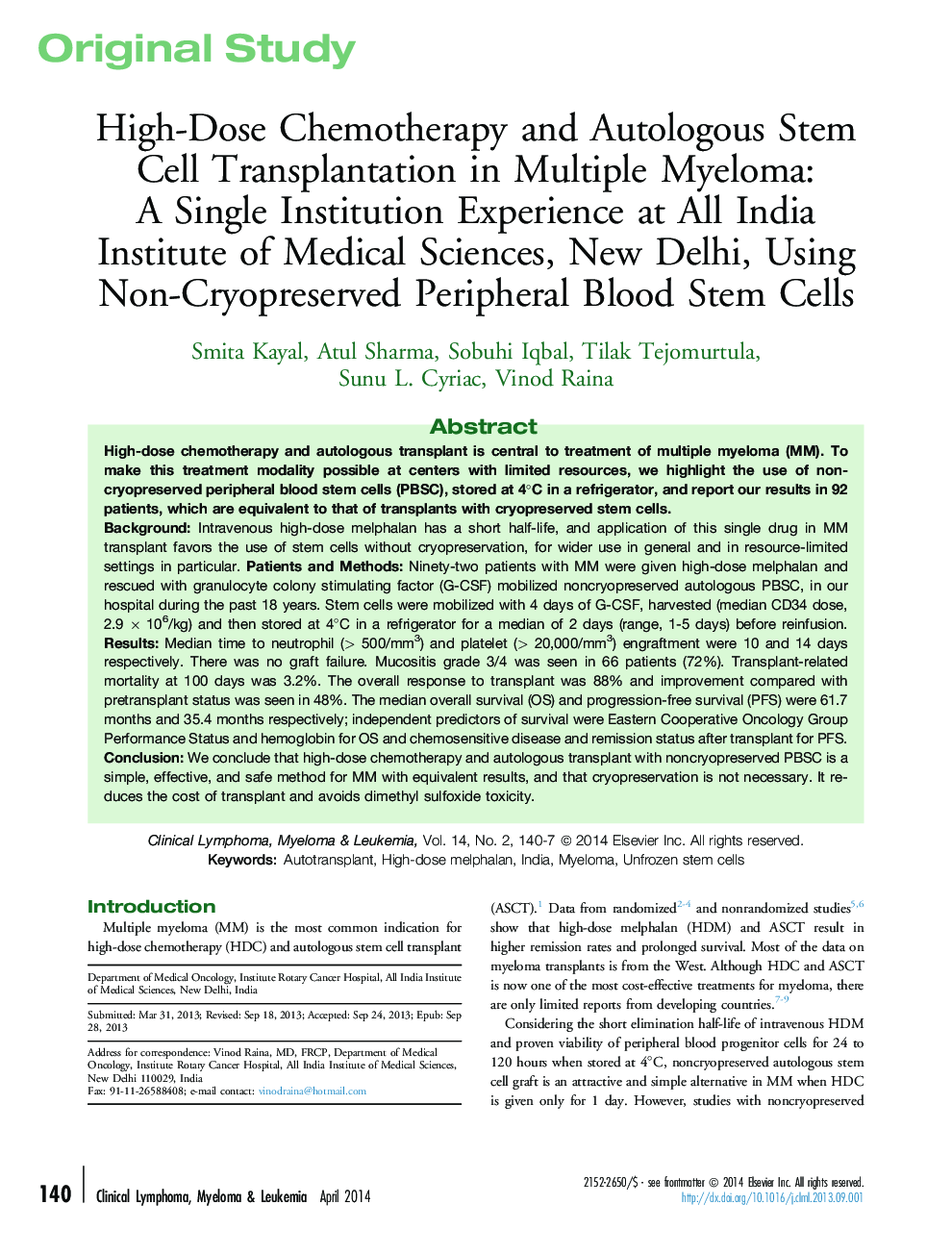| Article ID | Journal | Published Year | Pages | File Type |
|---|---|---|---|---|
| 2754344 | Clinical Lymphoma Myeloma and Leukemia | 2014 | 8 Pages |
BackgroundIntravenous high-dose melphalan has a short half-life, and application of this single drug in MM transplant favors the use of stem cells without cryopreservation, for wider use in general and in resource-limited settings in particular.Patients and MethodsNinety-two patients with MM were given high-dose melphalan and rescued with granulocyte colony stimulating factor (G-CSF) mobilized noncryopreserved autologous PBSC, in our hospital during the past 18 years. Stem cells were mobilized with 4 days of G-CSF, harvested (median CD34 dose, 2.9 × 106/kg) and then stored at 4°C in a refrigerator for a median of 2 days (range, 1-5 days) before reinfusion.ResultsMedian time to neutrophil (> 500/mm3) and platelet (> 20,000/mm3) engraftment were 10 and 14 days respectively. There was no graft failure. Mucositis grade 3/4 was seen in 66 patients (72%). Transplant-related mortality at 100 days was 3.2%. The overall response to transplant was 88% and improvement compared with pretransplant status was seen in 48%. The median overall survival (OS) and progression-free survival (PFS) were 61.7 months and 35.4 months respectively; independent predictors of survival were Eastern Cooperative Oncology Group Performance Status and hemoglobin for OS and chemosensitive disease and remission status after transplant for PFS.ConclusionWe conclude that high-dose chemotherapy and autologous transplant with noncryopreserved PBSC is a simple, effective, and safe method for MM with equivalent results, and that cryopreservation is not necessary. It reduces the cost of transplant and avoids dimethyl sulfoxide toxicity.
